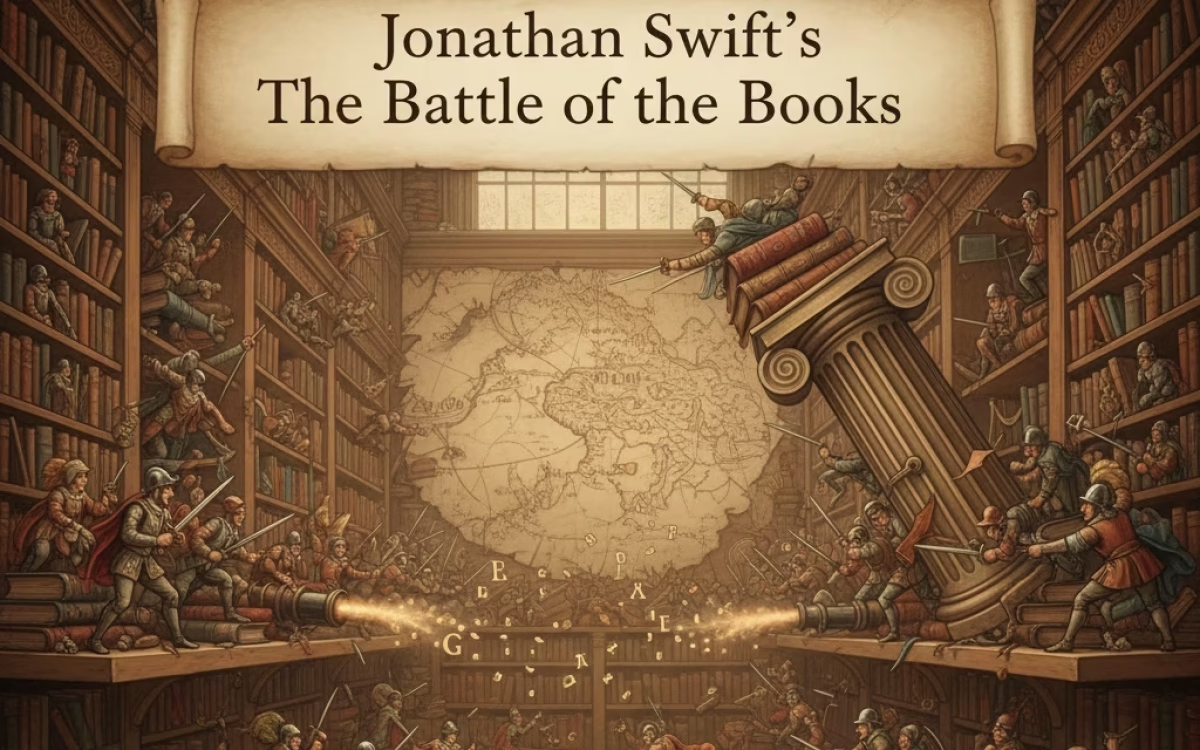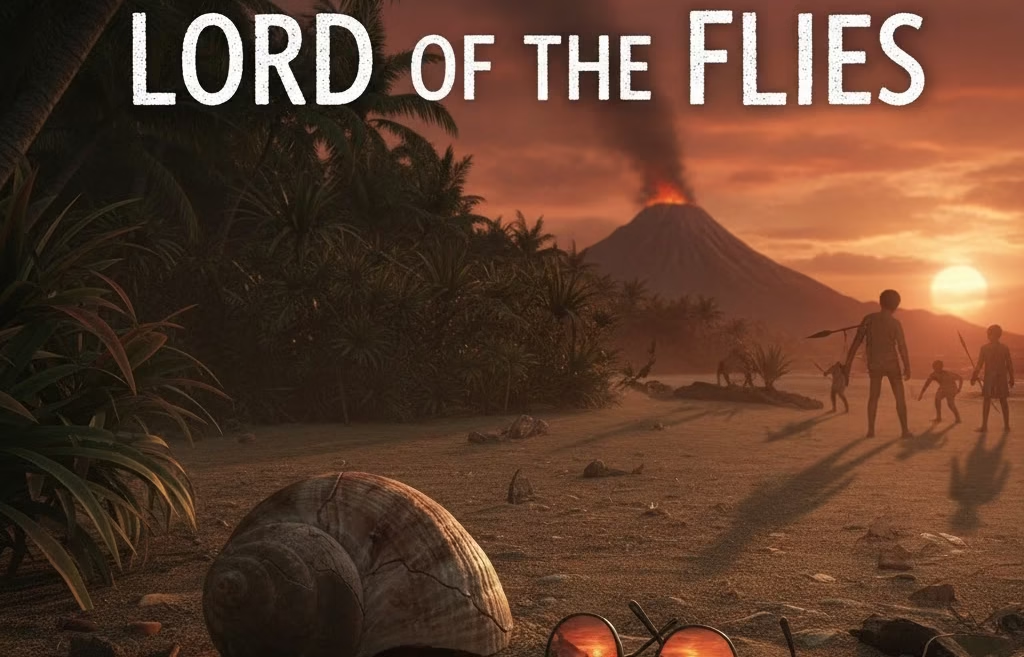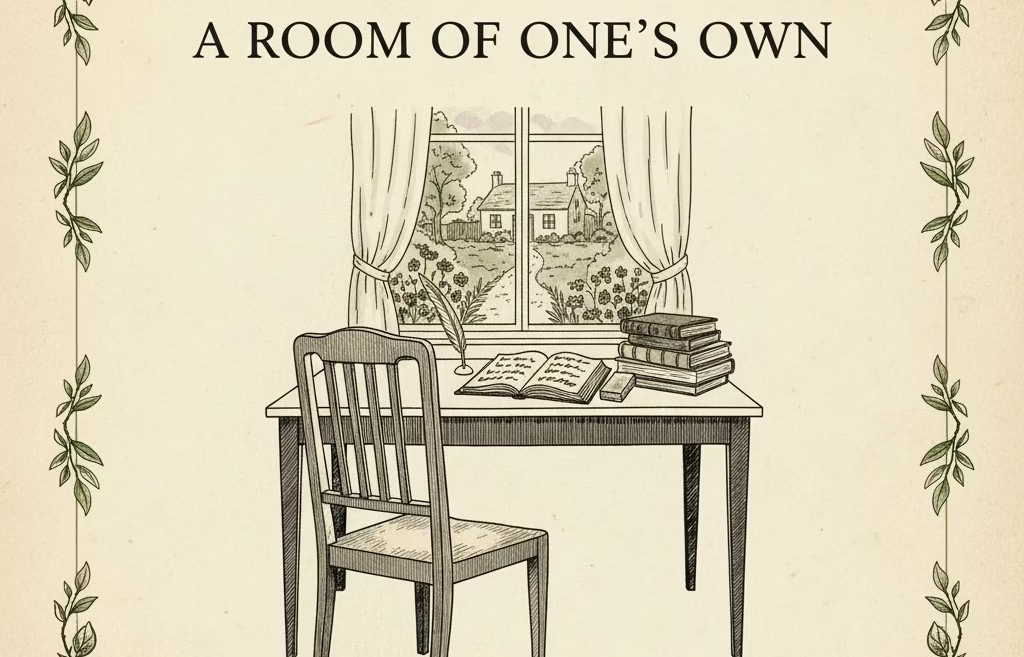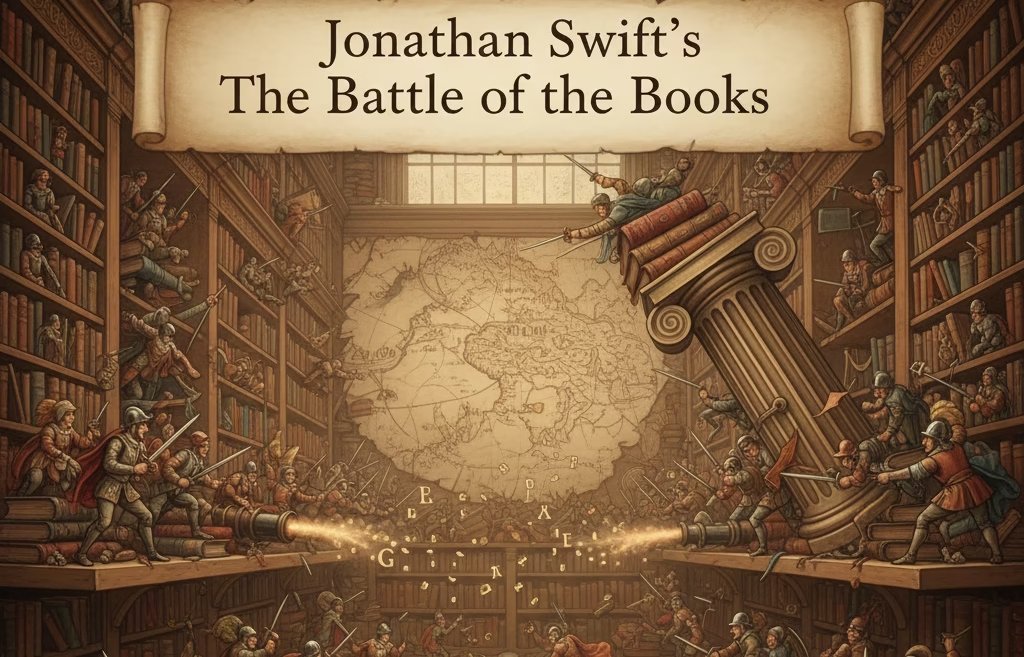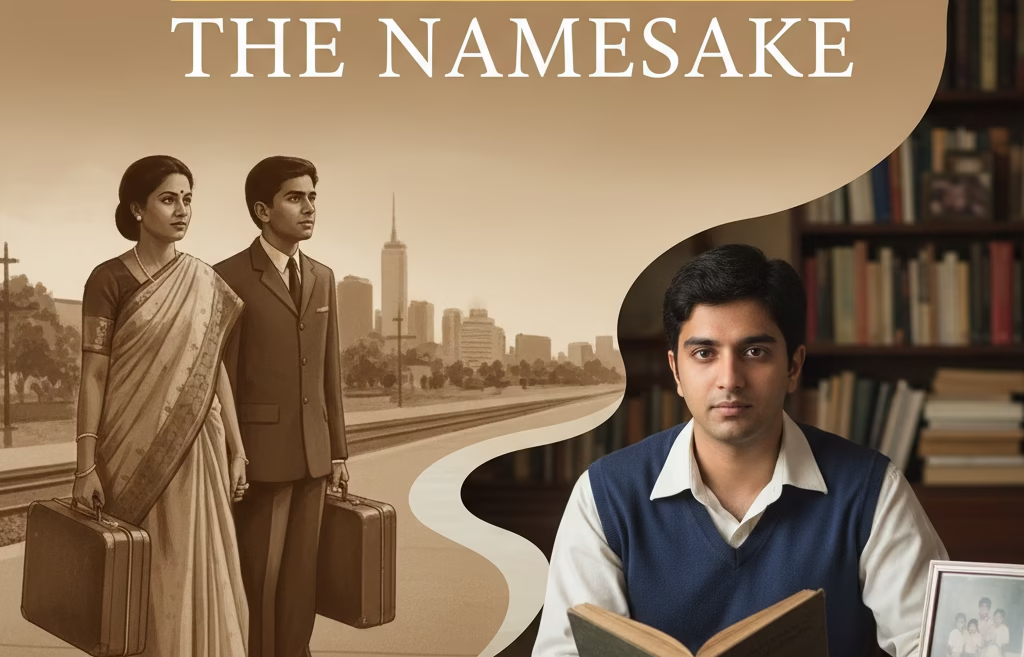Introduction
Jonathan Swift’s The Battle of the Books emerges from a pivotal moment in intellectual history when the rising tide of modern philosophy and science was challenging the value of classical learning. Swift, an astute satirist and supporter of the traditionalist Sir William Temple, offers his take on this contentious debate through an imaginative scene set in the library of St. James’s Palace. Here, books physically duel, embodying rival schools of thought — the revered ancients, such as Homer and Aristotle, versus the emerging moderns, including Descartes and Hobbes.
Swift’s satire deftly blends mock-heroic style with allegory, making the philosophical dispute accessible, humorous, and enduringly relevant. By animating books as warriors clashing with wit and absurdity, Swift not only mocks the vanity of both camps but also critiques the nature of intellectual pride itself.
Jonathan Swift’s The Battle of the Books: Historical and Cultural Background
In the late 17th century, Europe was abuzz with controversy about the supremacy of knowledge. The “Ancients” revered the wisdom of classical Greece and Rome, believing that authors such as Virgil, Cicero, and Aristotle had provided all necessary intellectual truths. Conversely, the “Moderns” championed new discoveries and philosophies, asserting that contemporary science and reason had surpassed ancient limitations.
This debate crossed from France, where figures like Bernard le Bovier de Fontenelle advocated modern superiority, into England, where Sir William Temple articulated a nuanced defence of the ancients in his essay Of Ancient and Modern Learning (1690). Temple used metaphors of dwarfs standing on giants’ shoulders and reflected versus emanative light to explain the dynamic between the two camps. Though the quarrel itself was short-lived, it significantly influenced cultural and literary conversations.
Swift worked as Temple’s secretary and, though not a direct participant in the quarrel, was inspired to dramatise the conflict in his satire, highlighting the folly and pride on both sides. FULL TEXT
Jonathan Swift’s The Battle of the Books: Satirical Devices
Swift employs a variety of biting literary techniques to construct his satire. The work is a mock-epic poem, parodying grand heroic battles through a fight between ancient and modern books. He uses personification vividly, turning abstract ideas and authors into corporeal fighters, complete with armour and weapons.
The bee and spider allegory, inserted as a poetic interlude, powerfully symbolises the two philosophies. The spider, which spins webs from its own body, epitomises the moderns’ self-referential and derivative nature. The bee, which gathers nectar from many flowers to create something sweet and useful, represents the ancients’ creative and natural wisdom. This contrast reflects Swift’s preference for classical learning’s authenticity and productivity over the moderns’ tangled, self-serving critiques.
Swift’s irony shines in how the moderns, led by satirical figures like Momus (god of faultfinding) and Criticism, align themselves with pride, ignorance, and vanity — traits portrayed as their downfall. His wit dismantles the pretensions of modern “progress” while acknowledging the shortcomings of rigid traditionalism.
Jonathan Swift’s The Battle of the Books: Plot Summary
In the library of St James’s Palace, the books prepare for combat to settle the quarrel. The ancients and moderns jostle on the shelves, with modern philosophers like Descartes awkwardly placed beside Aristotle, and modern poets like John Dryden trying to measure up to Homer and Virgil.
The battle begins with verbal sparring and culminates in physical clashes. Aristotle, Homer, and Pindar wield metaphorical weapons against modern challengers such as Dryden and Hobbes. Despite the moderns’ noisy and disorganised assault, the ancients dominate the fight, highlighting classical wisdom’s enduring power.
However, Swift leaves the conclusion ambiguous, reflecting the ongoing nature of the debate in real intellectual circles. The satire doesn’t fully declare a winner; instead, it mocks both sides’ stubbornness and invites readers to reflect on the nature of knowledge.
Jonathan Swift’s The Battle of the Books: Themes
Several key themes animate Swift’s satire:
Tradition vs. Innovation: The work dramatises the tension between reverence for classical knowledge and enthusiasm for modern discoveries, questioning which should hold intellectual authority.
Pride and Vanity: Swift critiques the arrogance inherent in both camps — the ancients’ haughty supremacy and the moderns’ overconfidence in novelty.
Nature of Learning and Criticism: The satire highlights the difference between genuine creative knowledge (like the bee’s nectar) and derivative, self-serving criticism (like the spider’s web).
The Power of Satire: By using humour and allegory, Swift exposes the folly of intellectual disputes, showing how pride and factionalism often cloud pursuit of truth.
These themes resonate far beyond Swift’s era, engaging with ongoing debates about the balance of tradition and progress in culture and education.
Jonathan Swift’s The Battle of the Books: Style and Tone
Swift’s style in The Battle of the Books is playful yet sharply incisive. The mock-heroic tone elevates a seemingly trivial literary quarrel to epic proportions, using exaggerated diction and elaborate description to humorous effect. The allegorical characters and spirited battles showcase Swift’s skill as a satirist who can blend serious ideas with entertainment.
The language shifts naturally between formal and informal registers, using idiomatic phrases and vivid imagery that invite readers into the satire’s world. Swift’s personal insight into human foibles — especially intellectual hubris — lends the piece a timeless human quality missing from more mechanical academic critiques.
Jonathan Swift’s The Battle of the Books: Relevance
The Battle of the Books remains one of Swift’s most accessible and enduring satires, studied widely both for its literary craft and its incisive social commentary. The poem’s central allegory of the ongoing conflict between old and new knowledge continues to find echoes in contemporary discussions about education, science, and culture.
For modern readers, Swift’s satire offers lessons in humility and balance, cautioning against unthinking valorisation of either tradition or innovation. It reminds us that intellectual progress depends not on dismissing the past but on engaging critically and creatively with it. EXPLORE OTHER WORKS
Conclusion
The Battle of the Books acts as more than a humorous escapade in literary critique; it is a profound reflection on the nature of knowledge, tradition, and human fallibility. Its open-ended conclusion emphasises that the quest for wisdom is an endless journey—fuelled by curiosity, tempered by humility, and enriched by critical reflection. Swift masterfully demonstrates that the true victory in such debates lies not in domination but in understanding the complex, often conflicting, layers of human thought and culture.
This timeless message invites modern readers to reflect on their own intellectual pursuits, reminding us that progress is best achieved not through dogmatic assertions but through open dialogue, respectful critique, and a balanced appreciation of the riches both past and present offer. Swift’s The Battle of the Books thus remains a vital literary work, urging humility and tolerance as foundational virtues for enlightened inquiry.
FAQS
1. What is Jonathan Swift’s The Battle of the Books about?
The Battle of the Books is a satirical work by Jonathan Swift that dramatises the intellectual quarrel between the advocates of ancient classical knowledge (the Ancients) and the proponents of modern learning and science (the Moderns). The poem humorously depicts books in a royal library coming to life and fighting in a metaphorical battle over cultural and literary supremacy.
2. What historical debate does The Battle of the Books reflect?
The satire is based on the 17th and 18th-century “Quarrel of the Ancients and the Moderns”, a scholarly debate over whether classical knowledge from ancient Greece and Rome was superior to contemporary scientific discoveries and modern writing. Swift’s poem allegorizes this debate, supporting the importance of classical wisdom with witty critique.
3. Who are the main characters in The Battle of the Books?
The main characters are personified books representing famous ancient authors like Homer, Aristotle, and Virgil (the Ancients) and modern authors such as Descartes, Hobbes, and Dryden (the Moderns). Additionally, gods like Jove and Pallas and mythical figures like Momus (the god of satire) play symbolic roles in the narrative.
4. What literary techniques does Swift use in The Battle of the Books?
Swift employs mock-heroic style, allegory, personification, irony, and satire to turn a literary debate into a dramatic, humorous battle. The use of the bee and spider allegory vividly contrasts the productivity and creativity of the Ancients with the self-centred nature of the Moderns.
5. What is the significance of the bee and the spider in the poem?
The bee symbolises the Ancients, who gather knowledge from many sources to create something sweet and productive. The spider represents the Moderns, who generate ideas from within themselves, often producing tangled and fragile results. This allegory critiques modern intellectual arrogance in contrast to ancient wisdom.

